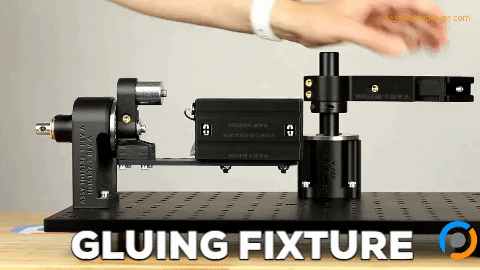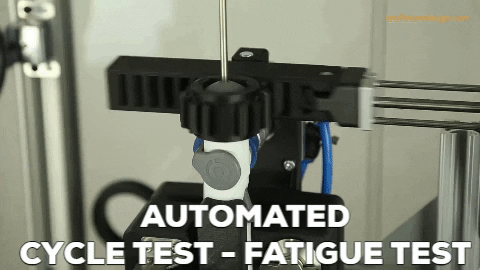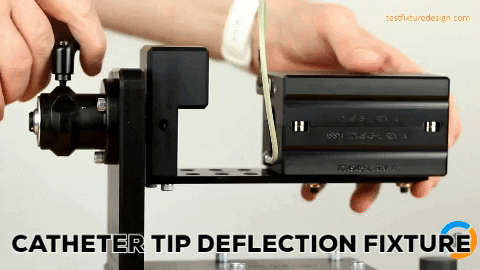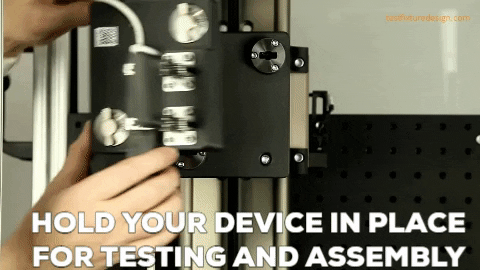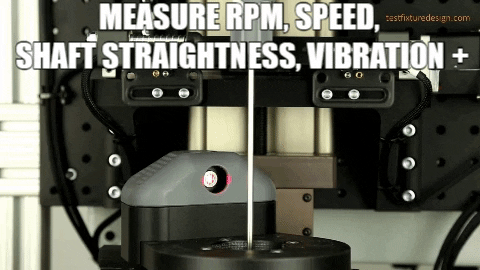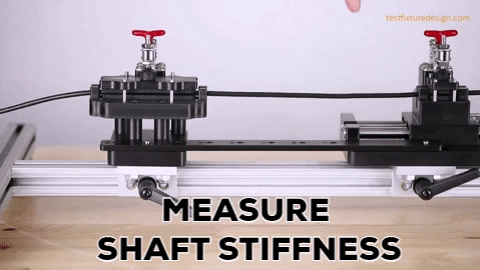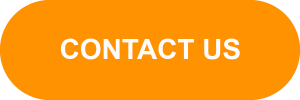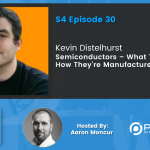S4E27 Ian McEachern | R&D Engineering Series – Interview 5 of 6

Who is Ian McEachern?
This is Ian’s second appearance on the BAE podcast, a distinction shared by only one a handful of others. Ian McEachern is back to talk about R&D engineering today, in this, episode 5 of 6 of our R&D series, exploring what it is to be an R&D engineer, and how this role is unique from other engineering roles.
For over 15 years, Ian has been helping cutting edge companies design highly complex products including artificial hearts, blood pumps, and class III medical devices. Products Ian has designed are in Times Square, the Disney Parks, the Smithsonian, and implanted in people around the world.
EXPAND TO VIEW EPISODE TRANSCRIPTION
SUMMARY KEYWORDS
r&d, engineer, engineering, design, called, standards, pump, part, good, work, build, story, years, grandfather, talk, making, perpetual motion machine, define, gave, implant
SPEAKERS
Aaron Moncur, Ian McEachern, Presenter
Presenter 00:00
Hi, everyone, we’ve set up this being an engineer podcast as an industry knowledge repository, if you will, we hope it’ll be a tool where engineers can learn about and connect with other companies, technologies, people, resources and opportunities. So make some connections and enjoy the show.
Ian McEachern 00:18
Even if you do everything exactly right, and hire all the best experts in the world and do everything that you should do. It might be a spectacular failure initially, but you need to just do the work and just incrementally make those improvements and then get there and just kind of trust the process of engineer.
Aaron Moncur 00:48
Hello, and welcome to the being an engineer Podcast. Today we’re speaking with Ian McEachern And this is actually Ian’s second appearance on the being an engineer podcast a distinction shared by only one or two others in his back to talk about r&d engineering today in this episode number five of six of our r&d series, exploring what it is to be an r&d engineer and how this role is unique from other engineering roles. for over 15 years, Ian has been helping cutting edge companies designed highly complex products, including artificial hearts, blood pumps, and class three medical devices, products in his designs are in Times Square, the Disney parks the Smithsonian and implanted in people around the world in thank you so much for joining us again, and welcome back to the podcast. Thank you for having all right. So do you think of yourself IED as specifically an r&d engineer or more just kind of a general engineer? And then how do you even define the distinction between those two?
Ian McEachern 01:53
I think of myself as both I think r&d engineering is kind of a subset of of engineering. It’s kind of subsumed by the Venn diagram, I guess. And I think that what separates an r&d engineer is an r&d engineer is asked to do something, not the same way it was done.
Aaron Moncur 02:11
Yeah, I’ve been talking with others about this topic, r&d. And the role title of sustaining engineer has come up as almost the the antithesis of the r&d engineer, right, that they’re really in opposite corners of the room. Thinking about some of the projects that you’ve worked on over the years, have you ever seen trends or patterns in some of the common challenges that you run into, over and over in r&d?
Ian McEachern 02:45
Yeah, so there’s a lot of little pieces here and there, the come up a lot that you need for, like, for example, I work a lot in medical devices. And so there’s a lot of medical standards that you need to meet. And for those, there’s a lot of like electrical isolation and other kinds of requirements. And so there’s often these little widgets that you need to buy that either do electrical isolation for a signal or perform some other kind of safety mechanism with this required by the standards themselves. And oftentimes, those it’s like a little hidden market. And maybe there’s one or two suppliers that supply those little widgets that you need. And sometimes they’re too big, sometimes they’re too slow, sometimes they’re out of stock. And so a lot of times you run into those kinds of issues where it’s like a very specialty item that you need, and you don’t really want to build it yourself, and you have to have it because the standard say you have to have it. And so sometimes, that’s one of the challenges you run into. Another challenge that I run into a lot is standards interpretation. And so a lot of what the work that I end up doing, especially early on when you’re defining architectures of things, is say you want to you want to build a medical robot that also needs to meet some construction industry standard for some weird reason, right? Like I’m just making up a high in the sky thing. And so you have to kind of meet these multiple different requirements. And opinions differ on where where the lines of those requirements do go, right. It’s a lot like building a house, right? Where you have to deal with different you have to deal with the county in the city, and sometimes the city and the county don’t agree and, and so one of the challenges the the I run too often early on is you you kind of go out to the different eyesore and see or whatever standards that define like the screws you have, or they define the housings you have or they defined the electrical, electromechanical equipment that you have. And then you might have another standard that says something else and you’d have to kind of define what where does this product lie like which parts of which of these standards do we need to comply with? And how do we create that story that all these different regulatory bodies will buy? I agree with and buy into, and then that that almost 90% to find your product in the beginning, because you just have to meet all these different requirements and kind of going work your way through that minefield can be difficult, especially with stuff like stuff. Like, for example, a good example would be surgical robotics, right? Where you have all these medical device standards, but then you also have all these robotic standards and automations. Kind of where’s the line between those?
Aaron Moncur 05:30
Yeah, navigating that whole path is challenging. Going back to your comment about supplied parts, and sometimes they’re not in stock? And sometimes they’re hard to find. Are you familiar with the website? chamfer? No, they’re kind of new. And we had their CEO or co founder on the show just a month or two ago, but it’s ch AMFR. So creative spelling without the E at the end. And that’s what they do is is low quality, kind of r&d type quantity, components for medical device development. So just called Yeah, might check them out. I think it’s just chamfer.com. Alright, so let’s see, moving on here. Most of us, I mean, you work for yourself. So it’s a little bit a different, but most of us have job titles, right? If we’re mechanical engineer to or r&d engineer, or biomedical engineer, or whatever it is. And sometimes there’s a difference between what our job title is and what we actually do. What do you think the role is of an r&d engineer,
Ian McEachern 06:42
I think the role of the r&d engineers to take requirements and in in you know, I do hardware so and then make hardware from it. And kind of define, it’s almost like world build, where you you kind of take people say, I want something that looks like this weighs this amount, and it does this function, and you go out and on on the beach and pick up 10 grains of sand and put them together and then show him something. And then once you have that kind of architecture and framework, you can iterate right like in you can move that whole thing forward. But you really have to have something to throw darts at a dartboard to start kind of making it happen. And the way that I think about that, is it’s a series of interface. So really early on, you kind of have design requirements. And then then the next step is, well, let’s define the subsystems who’s responsible for those subsystems. And the interfaces, right? Like how do those subsystems interface and how do those people responsible for those subsystems interface, and then and then that starts to give you real structure where you can say, okay, the computer does this, the robot part does this, the mechanical structure does this, and this is how they all connect. And then you start to build that structure. But I think r&d engineer engineering, as a profession is different than a lot of other other engineering because other engineering professions, because so many other engineers, you’re really taught to color within the lines, like you really said, like B. So the third row tables, this is the way that it is this is the torque spec from a for MH, screw into steel. And then as an r&d engineer, you’re really coloring outside the lines, you’re really saying like this is all the things that already exist. And people have written papers and books about them. And we’re going to make something different than all that. And to do that, we need to go outside of what they’ve done. And so really, a lot of that isn’t maybe sometimes you’re taking a like in a thermo table example, maybe you’re taking a thermo table, and you’re seeing what happens off the end that nobody’s ever tested. Or maybe in a in a torque spec thing you’re you’re looking at, maybe you’re changing the helical thread pitch of that fastener, or you know, there’s just a million different ways to change what was done before because again, those people just chose lines in the sand, based on technology that was available in the late 1800s might take some mechanical engineering. And so that’s really a lot of what the mechanics of what r&d engineering is not only to make a new product or a new system, but to push the craft of engineering further in service.
Aaron Moncur 09:17
I love that. I love your analogy of coloring between the lines versus not and I might even take it one step further and say for r&d, engineering, oftentimes there are no lines at all. You’re making up the lines as you go through paper.
Ian McEachern 09:29
Yeah, yeah. What color paper to draw. Yeah, exactly.
Aaron Moncur 09:33
Great. Even better, you can choose what color paper to draw it. Yes. Yeah. All right. Your analogy of world building. I also found to be really interesting. I actually I think of building a business like building a new small country. And so that that analogy really resonates with me. Do you remember where you were or how you came up with that analogy that r&d engineering it’s like world building.
Ian McEachern 09:59
I don’t I honestly dont,
Aaron Moncur 10:01
yeah, it’s a really interesting way to think about it. I love it. Well, as your world building as an r&d engineer, there are things that that probably go fairly quickly and other things that don’t go so quickly. Can you think of any of those things that maybe you would like to dramatically speed up? You know, what, what are some things that you’d like to be able to do 10 times faster.
Ian McEachern 10:25
I can tell you one of the things that I feel like myself in the teams that I do a lot faster than maybe hasn’t permeated throughout the whole industry, or kind of one of the things that what used to frustrate frustrating me until me very rarely, until very recently, right. And that is manufacturing parts. So I work with a lot of like, very complex integrated systems. So I sometimes make some software analogies, and that helps people that I work with, because there’s a lot of software people. But basically, in the software world, you write a bunch of code, and then you compile it. And then you see if it runs. And in mechanical engineering, you write a bunch of code, which I view, I view SolidWorks as a scripting engine, right? Like it’s a visual scripting engine. So you write a bunch of visual scripting code that creates some geometry at the end. And then you export that geometry, and then our form of compiling it is going getting it and getting it manufactured a machine shop sheet metal shops, wherever, you know, a PCB design houses all that are PCB assembly houses, that kind of stuff. And sometimes that cycle can take months. And it’s it’s not, it’s not just difficult in the time, but it’s also difficult in all the rigor or all of just getting quotes getting POS getting all the agreements in places in place. And when I help startups kind of build hardware orgs a lot of what I ended up doing and 10 years ago, 15 years ago, people in my role a lot of what they would bring with them as a Rolodex, right. And they bring with them a Rolodex of, you know, Joe, who runs a local machine shop who will get you in line, because usually the lead times are months for these places, right. And so as part of this whole digital revolution that was kind of promised by Chris Anderson and all that stuff on the wired 3d printing stuff, like we everything was going to be 3d printed, and it was all going to be one weekly time. Well, that hasn’t really happened, right? Because 3d printing isn’t everything. But what has happened are a lot of these online platforms. I think, like the organization you run is very similar, like 15 years ago, there wasn’t a place where I could just say I need a bunch of automation test equipment. And then a few months later, or a month later, it’s done right. But now there’s so many of these kinds of like serve like intermediary services bureaus, where you can go and get all that stuff sourced. And so what has really changed for me, especially even in the last couple years, is that as a design engineer, r&d design engineer, we can essentially design hardware, and then order it online. Like we’re ordering stuff on Amazon custom parts, even stuff like the chamfer thing you just mentioned, there’s just those kinds of things and, and that really has taken away maybe half of the time that I used to spend on the phone, talking to people go into machine shops, and then a lot of times with these machine shops, they would have you sourced the material because they didn’t it just like all ends up being a complicated thing. And now a lot of those bureaus have taken that complexity away so that we’re able to really kind of focus on what we do ask. And I just want to I just want to say that for organizations that haven’t embraced that yet, do so. And I encourage you to just kind of not not necessarily, I’m not talking about like for manufacturing and high volume stuff I’m really talking about in within your r&d development organization. If you’re not turning around designs on in weeks, not months, and you’re not testing things in weeks, not months, and you’re not expecting hardware parts back in weeks, not months, maybe reevaluate that, and I think you could find a lot of efficiency in kind of a process.
Aaron Moncur 14:09
Yeah, that’s great. And I think you’re referring to companies like xometry and proto labs, right, where you can just submit parts online and get a quote, auto generated.
Ian McEachern 14:19
And deceptive. Yeah, exactly. Yeah.
Aaron Moncur 14:21
Yeah. All right. What What’s one of your proudest accomplishments as an r&d engineer? So did in general, I
Ian McEachern 14:30
try not to talk too much about things I’ve done recently, for a lot of reason. I talked about all this stuff, but this is very, very vague. But we had a real recent accomplish accomplishment with a big, big team. I’m personally very proud of just the engineering accomplishment, but we had a co worker mentioned several times to us that that he was jealous that we were having so much fun as we were kind of, you know, working the extra hours doing the extra extra work. Kenny was kind of like in the difficult part of the project. And, and I think that’s what I’m most proud of is not not the fact that we’re, you know, we’re able to do good cool things and design cool things, but to have fun and love ourselves while while doing that is is also.
Aaron Moncur 15:15
Amen. Brother, you’re speaking to the choir here, the purpose at Pipeline is to promote joy in the lives of our team members. And without the joy, you know, what’s, what’s the point really? So yeah, love that. Well, what what is something that you wish, maybe even other engineers or, or engineering leadership would realize about r&d engineering that maybe they don’t fully appreciate? You know, not having been in the shoes of an r&d engineer,
Ian McEachern 15:44
I think that it’s foundationally, fundamentally built on failure. And you have to do that, you have to be prepared for it, you have to be ready for it. And and you have to just keep going. And one of the best examples that I have of that is, so early on, I’ve worked a lot in the LVAD artificial heart industry, right. And so there’s a very famous company in that world called Thora. Tech, that’s now part of Medtronic. And they, in the CES in the 80s. So basically, this is a really good story. So I’m going to take some time. So ATK fire call is a company and then based in Utah, right, so they’re they built a solid rocket boosters for the shuttle. And then one of the other big rocket engine producers in America is called aero jet. And they’re based out of Rancho Cordova, Sacramento. And so they built the f1 engines for Apollo. And so one of the big, big challenges when you’re building these things is are the turbo pumps. So I forget the exact spec. But Apollo f1 engine burns like 40,000 gallons of cryogenic fuel a second or something like it’s, it’s, it’s more than you can comprehend, right? And it’s ultra cold, it has to be pumped at a like perfectly right rate, or else you start having that Pogo effect, right? Very, very detailed. So the people charged with that were Aerojet, in Rancho Cordova, Sacramento, basically, it’s called a turbo pump, it basically looks like a turbo in your car, but it runs a way higher RPM. And you use some of the exhaust to turn one side, and then the other side haunts the palate. And there’s an unbelievable temperature temperature differential between the two sides. So you have all these magic materials. And so that’s one of those things when when Kennedy said, you know, we’re gonna have to invent new metals to go to the moon. This is one of those situations where they invent new metals and make the turbo pumps. And so the people that did that out in Rancho Cordova at Aero jet, this is like years later, Apollo’s no longer they’re still making so rockets, but whatever. And then, the story is that Lyndon Johnson started having heart failure. And then the US government was like, Well, we, we can go to the moon. So of course, we can make an artificial heart. And so at Aero jet, they actually have actually held it in my hand in a nuclear artificial heart, where I had a thermal pile on one side and a Stirling engine on the other No
Aaron Moncur 18:17
way, why not just
Ian McEachern 18:19
use the D k of n, the thermal gradient, rolling engine, and it was like implanting two golf balls and stuff. So it didn’t work. They didn’t do it. But that was the start. Right. And so long story short, another gentleman named Dr. Wampler proved that you could pump blood not by having like a bellows pump the pumps like this. But you could have a pump it with like a axial flow pump like a jetski, where you just have a channel and then a propeller spinning inside of it. And as long as you do things, designed things certain ways, and run it a certain way, you don’t get too much what’s called Three limb hemolysis, which is destruction of the red and white blood cells. And so he proved that in a patient in Texas early on, and then so the whole industry kind of pivoted to say, hey, let’s make a tiny little pump that’s like a little jetski motor, and you basically embed magnets in the rotor, and then you have a bunch of coils wrapped around the outside. And then you just have a propeller spinning and blood. And then you put jewel bearings, like in a watch little literal jewel bearings with a pin and a socket on both ends, and they’re called blood washed bearings. And then that that’s the HeartMate to and they’ve implanted that in 30,000 people, there are people that have been kept alive over 10 years longer than would have normally just died. It’s and then it’s now been superseded by the HeartMate three, which is full magnetic levitation. But the reason why I’m telling this story is the HeartMate to when they initially designed that pump. They had a previous pump that was one of those bellows pumps, and they actually put sintered titanium microspheres all on the inside of the pump, just like you do on the outside of a hip implant. If you see like a hip implant, they do that. And then that that makes it easy for all of the bone and tissue to grow in and really grab a hold of it. And they found that if they put that same microspheres surface on the inside of the artificial heart, that you got what’s called a pseudo intima layer, which is kind of like the biofilm that the body grows over stuff. And then and then you don’t have synthetic material. It’s literally like a body of material on the inside of that. And so they were like, oh, let’s put that same stuff on this new rotary pump, the HeartMate, too. So they took the rotary pump that worked real good, they did a bunch of animal studies, and they put all the micro spheres on it. And they’re like, Okay, let’s go to human studies, right. And then they go do the human studies, the first 10 pumps clot off immediately, just gets filled up with blood, totally caught off, stop working immediately. And these things cost millions of dollars. Like this is this is like, multi million dollar disaster. And, and so they they, a lot of times it a lot of investors, you could just cut it off, then just like, cut it off, didn’t work. But you still they stuck with it, right? And so they took them the microspheres off, they put them microspheres on just some particular parts of the pump that took them time, a year or two. And then they went back to the clinic. And then slowly kind of incrementally improved the little improvements here and there. And then that it became kind of the standard of care, the standard of treatment and it saved 10s of 1000s of lives. And so I think that that’s like my best example of it. Even if you do everything exactly right, and hire all the best experts in the world and do everything that you should do. It might be a spectacular failure initially, but you need to just do the work, like nose to the grindstone, do the investigation, look at it under a microscope, figure out what’s going on. And just incrementally make those improvements and then get there and just kind of trust the process of engineer.
Aaron Moncur 22:02
I love it. What a great example. And as I’m listening to talk about the SAE, and I just, it’s so clear to me that like you are the quintessential engineer, right like other people are, are playing little games in their phone, you’re out reading articles about engineering and just gathering all these stories and information I love it. All right. I’m gonna take a real short break here and and share with the listeners that Team pipeline.us is where you can learn more about how we help medical device and other product engineering or manufacturing teams develop turnkey equipment, custom fixtures and automated machines to characterize inspect, assemble, manufacture and perform verification testing on your devices. Were speaking with Ian McEachern. Ian, when when you wake up in the morning, what like what is it that that drives you to do what you do? What what brings the joy into your life as an engineer? And then conversely, what’s something that really frustrates you about r&d engineering
Ian McEachern 23:11
it out on that it’s a bit of long story i and it’s kind of captured by the kind of Neil Armstrong quote on my website. My My grandfather was a an Okie, right. So from The Grapes of Wrath, but he was from Nebraska, basically. And he was a second youngest of 12. And his they had a family farm in Nebraska, in the 20s. And his mother died. And so they lost the farm. And so the whole family just kind of separated. And then my grandfather eventually rode the rails all the way to California. And he got a job picking fruit in the in the orchards in California, northern California. And then while he was there, they had ads. This was in the late 19, teens, late late 19 teens, and there was an ad for the Submarine Force, and in the Navy. And so he said that he joined the Submariner force because it paid the best out of the all forces. So he came down to San Francisco joined the Submariner for us, and then was on a boat called the USS story, and then was stationed at Pearl Harbor. And he was there that morning on December 7, and he said he was eating breakfast, and they gave him a rifle. And that was his job was to just shoot at the Plains with a rifle. And then you know that that wasn’t the man I knew where I’d like I warned way, way, way after that. But then, many years later, the man I knew had carry like hidden and after his death, I have since learned a lot of more history about him like I, I, you know, I got the history of his boat from the Naval Maritime Museum in Amsterdam and I, you know, all the other historical things and he was at a lot of the rather more unpleasant things in the Pacific Theater and A lot of the stories he had were just really harrowing, right? And, and that after, after all that he lost the lung. Like he was like very damaged physically by the war. And then after that, he came back. And he had, he worked for Martin Marietta, and first in Colorado, but then they moved to Florida. And my grandfather was part of the mercury project and the Apollo Project. And my grandfather, my grandmother, my mom, and my uncle saw the moonshot take off. And on my mom, or on my grandmother’s deathbed, I asked her about it, because I didn’t really talk to her much about it. And I asked her on her on her deathbed, and she was pretty far into dementia, right. And she instantly came back and she looked my wife and I in the eye, and she said, it still makes my scalp tingle. It is the most incredible thing I have ever seen. And, and through my grandfather’s life, like I spent a lot of time with him and growing up. And he was part of the occupation in Japan after the war. And he had all this Japanese memorabilia, he taught us how to teach, how to cook Japanese how to use chopsticks. He was just that was the kind of guy that would never say a disparaging person about anybody. It’s disparaging thing about anybody, especially what would have been considered his former and, and, and at the time, I didn’t know the gift he was giving me you know, like, at the time, I just did Don’t kid getting raised by this wonderful man. But now as an adult, and having kind of like really comprehended the every the gravity of what what happened to him. And then also in retirement, like he, he had a pension from the Navy. He had a pension from Martin. And then after that, after retiring from Martin, so he retired from the Navy, he retired from Lauren. And then after that he was a sergeant at arms at the Colorado State Capitol. And then he got pension from that. So So any one of those careers would be a career of service, right? And he had three. And he also had purple heart like that there is no more honorable man or person and then my grandfather, and he really like he, he didn’t use it as a way as clout as like, like he, he you wouldn’t think like he was the most humble kind person. And like later, late in his life, like he, he was cancer, right? It gets us all but he was like, suffering and he can’t he was walking down the street. And there was a there was a handicap man that was having trouble backing up his his handicap capable truck, out of the out of the parking spot. And it was set up where there was no driver’s seat, right, because the guy had like a lift and displaying it on the front. And so like grandpa offered to help him like grandpa was on his knees in his 80s standing in this van trying to help this guy back up. And he messed something up in there was like a minor incident. And he got hidden and said, but I just remember us all being so weird and telling like you can’t, you got to stop, you got to stop helping everybody, you got to stop. And so So and the Navy taught him to be an electrical engineer. And so the Navy gave him something. And he was always really grateful. He was always really grateful for the life that he was given. Right. And so maybe like I just came out knowing what I wanted to do when I was very fortunate to have kind of the high school and college education path kind of laid out for me. So it wasn’t difficult for me to go to college to go to a good engineering school to graduate and I had all of the support. And a lot of people really rooting for me and a lot of people that really kind of borrowed from themselves and invested in me to get there. And so in my opinion, if I don’t do something at least half meaningful with that. And you know, like a lot of people have gone a long way to get me to hear and so if I kind of don’t do something help for you for that, that. That’s not what I want.
Aaron Moncur 29:09
Yeah. Well, you know, I remember part of the story from the last time you were on, and I think you’ve shared even more details now. First of all, your grandfather just sounds like an incredible man. Thank you for sharing that. I think a lot of people listening are going to feel uplifted by by a few details from his life. And it’s like you have this responsibility. Right? Yep. To work. Yeah. Yeah. That’s, that’s it makes me feel almost a little guilty. I was at dinner with my dad one night and he says, What are you going to do in you know, for work when you graduate high school. This is back when I was a senior in high school. And I was like, I don’t know, I’m not really sure I was more into surfing and hanging out with my friends. Right? And he says you should consider engineering and I said, Yeah, okay, that sounds good. And That was seriously about as much thought, as I gave to it turns out, my dad knows me pretty well. And it was a really good fit. But I mean, I don’t know quite to say this, like, I wish I had a story like yours might is much, much simpler, but it’s so compelling and motivating to hear you talk about it. And like, it makes me feel like oh, yeah, I really do have this great gift. And I should probably do more with it then than I am even. So anyway, I’m just rambling now, what were what are one or two things that you think are really very difficult about teaching someone to become an r&d engineer, but maybe like a student who’s just graduated, or a young engineer who hasn’t really cut their teeth yet in the r&d world?
Ian McEachern 30:50
It’s really hard to know what what rules you can break and what rules you can’t break. And so it’s kind of like the natural built world and the human Berchelt world, right? So like, like, you can break you can break the human built world, world rules like you can jaywalk, not going to die. But the natural world rules like crossing the Amazon, you’re gonna die. And so if that’s the way I kind of view it is, in r&d engineering, you need to know what are kind of general rules that have been identified in standards or in books that are human defined, and what rules or like rules of physics, you’re never going to get around. And so fundamentally, light and even like, running a business like like yours, or an engineering business, you have to parse through that all the time, I’ve had three or four people asking me to build a perpetual motion machine. And now I’m really, really good at understanding early on that this is a perpetual motion machine. And, and at first I wasn’t because you kind of believe people, they have like a whole story and but the like, there’s fundamental rules, you can’t you can’t break like and I’m reminded like, one of my favorite episodes of The Simpsons is, Homer says, Lisa, in this house, we obey the second law of thermodynamics. And I always think of it that way, like when you ask them obey the laws of thermodynamics, but you don’t have to obey all the laws in the machine design.
Aaron Moncur 32:15
Your mention of perpetual motion machine just reminds me of the story, I have to share real real quickly. Back. Shoot, this was probably 1314 14 years ago, it was quite a while ago, back when I was a newer engineer, a gentleman that I knew, respectable guy was successful guy, he owned his own business. He came to me one day, we’re in the same church group. And so we knew each other there, he came to me and said, Hey, I got this idea, this invention that I want to make. And so he started describing the invention to me and, and as he spoke more, I started realizing, hold on, this sounds like a perpetual motion machine. And I said that, and he stops me right away. No, no, no, no, it’s not a perpetual motion machine. Well, what you’re describing to me, sir, it is a perpetual motion machine. Anyway. He ended up working in my I just, I can’t even say it without laughing now. He ended up working in my garage for months on this perpetual motion machine because because his wife Lindblad work on it and home. In her house, they obey the law. That’s exactly right. My wife would get up in the morning, and then here’s this guy at our garage. Oh, it was just it was too much. Eventually, I drew a freebody diagram. And I said, Hey, this is why it won’t work. It just is not going to work. And I don’t know if you accept that. Or he said the thought that I wasn’t I wasn’t the right partner anymore. But he he stopped soon after that. Okay, speaking of magic here, if if you could wave a magic wand and change one thing about your role as an r&d engineer, what would it be?
Ian McEachern 34:07
I really, really enjoy making stuff, like making new stuff. Almost all of it doesn’t really bother me. What does bother me is, and I think it it’s it’s not like an r&d engineering thing. And this isn’t specific, like I have a good friend who’s a who’s a lawyer, right? And just like, could not be more different than kind of my job, but we’re really good friends for a long time. And, and he said, like, about something in his business, he said, it’s just like any business. It’s about relationship. Right? And so and so in my view, this isn’t really an r&d thing. This This applies to any relationship, any business relationship. And the difficulty I have sometimes is like, because for all the reasons we already discussed, like I really bleed for my craft because I choose to write like I If I, like if I do a calculation and it’s wrong, I am deeply cut. And that’s, that’s not nobody else’s fault of mine. Right? And so if if, if someone, and there’s a lot of people like, right, there’s a lot of extremely, extremely passionate professionals, not just engineers, all kinds of professionals, right? And you kind of do that you do that bleeding, and then you take it, and you go to that design review, go to that whatever, presentation, and then invariably, and you’ll find this more so in like more toxic cultures and less so and less toxic cultures. And that’s why so many leaders talk about, like, making the right hires and making sure to not pull toxicity from a toxic culture. And so people have kind of, for lack of a better term, like, like, baggage. And when when you have this kind of contemptuous environment, where it’s like, Okay, here’s a design that I made that I think solves our problems. And then you have healthy criticism that says, I don’t think it solves that. I don’t think it solves that, hey, this material I’ve used before and we had a bad experience. I don’t think you should count on it that way. That’s all great feedback. That’s why do we have a team? That’s that’s the good stuff. What what is difficult when is when some folks are like the conversation steers towards like, in the past, I had an engineer telling me something, and it didn’t end up being true. So I don’t trust it. And those kinds of like more, like less specific nitpicks, but more just like, I don’t trust you kind of stuff. And that ends up being it’s just difficult all around and into you end up having like a pretty 30% of everybody’s energy goes towards that. Right. And so I think it’s not exclusive to r&d. But but it is maybe more common, hey, because there’s a lot more failure in the startup world like, like, in the startup world, one in 10, is the rule of thumb that you’re supposed to be successful versus not. And the nine startups that aren’t successful, that doesn’t mean that they didn’t do good engineering, and that the engineers that work there aren’t good, and blah, blah, blah, sometimes it’s just the market change. Sometimes it’s just the the market couldn’t bear the price that they thought they made some bribe, bad kind of business assumptions. And, and so I think the, the real challenge, or what I could change is if this is kind of like a unicorns and rainbows thing, but I just want everybody’s culture to be positive and bubbly and nice and encouraging to each other. And somehow mad wave a magic wand and get rid of the kind of the negative part of culture. And I think we not just in engineering, but in all professions.
Aaron Moncur 37:50
I could not agree with you more. I love jujitsu. I do this jujitsu class a few times a week. And the place that I go, the coach is this big hulking guy, he competes in the ultra heavyweight competitions. And if you were to just look at him, you would be intimidated, because he’s just he’s just as big guy, right, and like, doing martial arts, but he’s really very gentle. He’s like this big teddy bear. Although if you were like rolling with him in a match, you wouldn’t think that anyway, where I’m going with this is he always encourages everyone to like, be nice to each other, you know, he’ll say regularly, hey, we’re not here to hurt each other. We’re here to help each other. So like, be nice to your sparring partner, right, be kind to each other, help each other. And I think the reason that so many people go to this particular gym, is not just because of the technical instruction that’s given there, but because of the culture that he’s created, right? Where people are there to just help each other. And it’s a joy to be there. And for sure, the same thing is true in in engineering 100%. Well, maybe this next question is already answered by what you’ve just said. But maybe there’s some other answers as well. What are some of the most important attributes or mindsets that you think an r&d engineer needs to have?
Ian McEachern 39:16
I think tenacity is one of them. And I think it’s it’s there’s so the few things so there’s a thing called Aikens laws of spacecraft design. If anybody hasn’t seen that, look it up. Aki N Aikens laws of spacecraft design, one of his laws of spacecraft design is the number of required iterations to design perfect is one more than you have done. And so it could not be more true. And so I think the the key is, Joe and I, a lot of people I’ve coached on this as well, right when you think it’s the time to give up to try it one more time. And that’s exactly what our r&d engineering is. It’s usually The person that just tried one more time. And it’s it’s really more about incremental steps in the right direction and knowing what the right direction is and being able to measure that. Like the light bulb, right? There’s there’s a lot of great examples of that. And so I think that stick to it. If it’s not, it’s not really like you just have this aha moment, write something down and go make something that perfectly works well. It’s really a process. And so I really think that that that’s key,
Aaron Moncur 40:27
At nine times out of 10, or maybe 99 times out of 100. Persistence, or in your words, tenacity, beats brilliance, right? Maybe that one time out of 100, it really does require a mega genius to solve the problem. But way more often than not, it’s the guy who’s willing to keep hammering away at the problem that solves it. Not the guy who’s you know, the smartest one in the room?
Ian McEachern 40:52
Yeah, this is the tortoise not the hare. Now,
Aaron Moncur 40:54
there you go. Yep. Yep. All right. Well, let’s see. I think we’ve just got one more question here. And then and then we’ll wrap things up, let’s pretend it’s three years from now. And you’re looking back over the last three years, kind of reflecting what needs to be true for you to feel happy and fulfilled within your role as an r&d engineer. Sure,
Ian McEachern 41:16
so I’m, I’ve reached a kind of an interesting inflection point, I, I didn’t really say I’d say this too much. And I It doesn’t mean I’m not going to keep learning, but I’m, I’m pretty happy with my skill set. And I really, really enjoy just making the things that I make. And I really don’t even you know, I don’t necessarily want to, you know, go leaps and bounds further. You know, I don’t, I don’t have aspirations to be a CEO of a startup or things like that, I really, I really just want to build and design good hardware and lead and build good hardware teams. And, and so that’s really fun. And there’s a little bit of kind of taking a deep breath and relaxation that comes with that, where now some of that extra energy that I used to use to kind of, you know, climb the ladder, for lack of lack of a better term, I really want to use to give back to the community and by the community, I mean, engineering community. So over the last several years, I’ve I have like, just like our relationship, right, like I build quite a few relationships with other, you know, passionate engineers, and a lot of younger engineers. And I make it a point every, every week to answer questions on like, there’s like a mechanical engineering and a machinist, Reddit subreddit. And so I make it a point to kind of answer questions there. And through, through just kind of doing that, and meeting people and a lot of local universities, a lot of folks have reached out and so I really want to start to dedicate a lot more more of my time towards not mentorship is kind of too specific of a term but but really just kind of helping out other engineers, other young engineers. And then also, I really want to start to put out just, maybe, maybe on my website or something, but just some, like free basic guides on how to, to get to where I’ve been where I am as an engineer, because the path was not very clear to me at all. And I just kind of bumbled here over the last 20 years, and one of the things that was really, really impactful for me is I heard a, an NPR piece a long time ago about why are there so many great Jamaican sprinters and, and the they do all this research. And you know, it’s not demographic, it’s not, it doesn’t have anything to do with any of those things. What it has to do with is if, if you’re a young person in Jamaica, and you want to be a sprinter, it’s a very obvious clear career path to do it. Like Like, the steps are in front of you, you see it, it’s on TV, it’s everywhere. But if you’re a young engineer, in Jamaica, and you want to be a product design engineer, or like me, if you want to be a product design engineer, designs, medical devices, and you went to the Colorado School of Mines, and I learned a lot about not making products, right? A lot, a lot of engineering, that’s also important to making products. But I also you know, there’s not so much a product design school, right? And that path is not very clear. And so what my goal is just kind of kind of start to flesh that out for young people. Because when you go into the schools, they say, Oh, do you want to be an electrical, mechanical or civil engineer? But there’s no clue as to how these organizations are built? How does how does like a robotics organization work? And what are the skill sets they need? What are the different things that people do? And what’s the best way to go into each of those? How was that all architected? Nowhere is there really that and a lot of people have that because their parents were in the business, right? And so like a lot of people that I’ve encountered, they have a real good vision of what they want because their parents kind of gave them that view of how these organizations run and how these organizations work. But I just want to kind of help do some of that. I don’t know I
Aaron Moncur 44:54
I love it. That’s that’s beautiful man at the engineering world and I just say the world and General is lucky to have you in. And I’m just very grateful that you’ve been able to take some more time today and spend it with us here on the podcast sharing some of that wisdom and insight. So thank you so much for doing that. Anything else that you’d like to share before we wrap things up?
Ian McEachern 45:16
No, to stay awesome, everybody. Thank you.
Aaron Moncur 45:19
Good advice. All right. How can people get in touch with you?
Ian McEachern 45:23
I have a website. It’s Iancollmceachern.com And all my contact information is there.
Aaron Moncur 45:29
Wonderful. All right. Well, Ian, thank you so much. Sure. Appreciate your time today. Talk to you later.
Ian McEachern 45:35
Thank you.
Aaron Moncur 45:39
I’m Aaron Moncur, founder of pipeline design, and engineering. If you liked what you heard today, please share the episode. To learn how your team can leverage our team’s expertise developing turnkey equipment, custom fixtures and automated machines and with product design, visit us at Teampipeline.us. Thanks for listening.
About Being An Engineer
The Being An Engineer podcast is a repository for industry knowledge and a tool through which engineers learn about and connect with relevant companies, technologies, people resources, and opportunities. We feature successful mechanical engineers and interview engineers who are passionate about their work and who made a great impact on the engineering community.
The Being An Engineer podcast is brought to you by Pipeline Design & Engineering. Pipeline partners with medical & other device engineering teams who need turnkey equipment such as cycle test machines, custom test fixtures, automation equipment, assembly jigs, inspection stations and more. You can find us on the web at www.teampipeline.us





